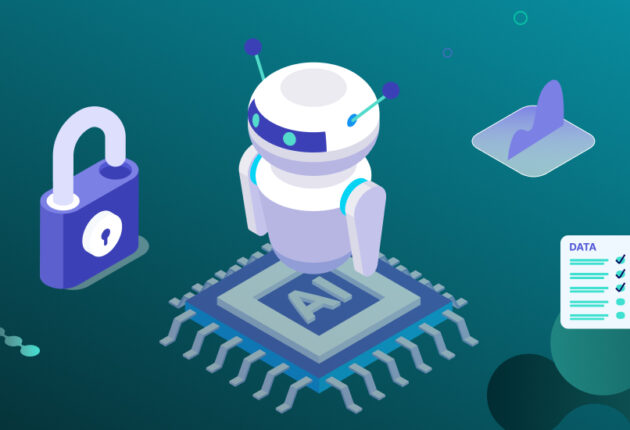AI, or artificial intelligence, has changed how we interact with technology. This shift has come in all shapes and sizes since the early releases of generative AI platforms such as ChatGPT.
Whether we like it or not, AI is a part of everyday life. These revolutionary platforms enable organizations and individuals to spend less time doing ordinary and rudimental tasks and more time being creative.
However, with great power comes great responsibility, and this is the same with AI technologies. AI technology can easily be used for malicious activity and unintended purposes that jeopardize the system’s security or even the safety and privacy of everyone involved.
Having proper governance over AI technology and platforms will ensure that everyone can reap the benefits without putting themselves in harm’s way. This article looks at how the Executive Order accomplishes this.
Understanding the Executive Order
The Executive Order on the Safe, Secure, and Trustworthy Development and Use of Artificial Intelligence, signed by President Biden on October 30, 2023, aims to balance the rapid advancement of AI technologies with the need to mitigate associated risks. It sets a comprehensive policy framework to ensure ethical development, enhance cybersecurity, and protect data privacy. By establishing governance frameworks and interdisciplinary committees, the order aims to oversee compliance with ethical and legal standards, encouraging public trust in AI systems.
This order is strategically significant as it positions the United States as a leader in AI governance, influencing global AI policies and practices. It promotes innovation by supporting research and development, fostering collaboration between industry and academia, and encouraging entrepreneurship while addressing potential risks through stringent guidelines and security measures. The dual focus on innovation and risk mitigation aims to ensure that AI technologies are developed and used responsibly, aligning with societal values and legal requirements.
Key Objectives of the Executive Order
This Executive Order sets certain objectives that can be considered the foundations.
Some of these key objectives include:
- Promoting safe and secure AI development
- Ensuring trustworthy AI
- Encouraging innovation and competitiveness
- Establishing AI governance frameworks
Promoting Safe and Secure AI Development
The Executive Order highlights the importance of enhancing the safety and security of AI systems through numerous strategies. These strategies include implementing robust cybersecurity measures, where developers are required to incorporate advanced security protocols such as conducting regular vulnerability assessments, threat modeling, and developing comprehensive incident response plans to mitigate potential risks, protect AI systems from cyber threats, and ensure the integrity and reliability of AI applications.
Ensuring Trustworthy AI
The executive order focuses on transparency, accountability, and adherence to ethical guidelines to promote trustworthiness within AI systems. It also calls for developing privacy-preserving techniques and guidelines to evaluate and mitigate algorithmic biases, ensuring that AI systems are fair and non-discriminatory.
Encouraging Innovation and Competitiveness
The executive order promotes innovation and competitiveness by supporting research and development initiatives, fostering collaboration between industry and academics, and promoting entrepreneurship in the AI sector.
It includes initiatives to expedite visa procedures to recruit international AI expertise and promote public-private collaborations to enhance AI research.
Establishing AI Governance Frameworks
The order seeks to establish governance frameworks to oversee AI development and deployment. This involves forming interdisciplinary committees and task groups to ensure compliance with ethical and legal standards and that AI technologies are utilized responsibly and ethically across multiple industries.
Key Provisions of the Executive Order
The Executive Order outlines several vital provisions intended to address the challenges and opportunities posed by AI technology.
Some of these key provisions include:
- Security measures
- Ethical AI development
- Innovation and collaboration
- Governance and oversight
Security Measures
The Executive Order mandates specific security measures such as vulnerability assessments, threat modeling, and incident response plans to mitigate AI-related risks. It also directs the development of advanced AI tools to enhance cybersecurity and protect critical infrastructure.
Ethical AI Development
Guidelines for ethical AI development prioritize fairness, transparency, accountability, and diversity. These rules are intended to mitigate possible biases and ensure that AI systems are not breeding discrimination.
Innovation and Collaboration
The Executive Order provides funding opportunities for AI research and assistance for small-scale AI developers, aiming to bridge the gap between research and practical applications. It also highlights the critical role of artificial intelligence in advancing healthcare, education, and public safety.
Governance and Oversight
To ensure responsible AI deployment, the Executive Order mandates the establishment of regulatory bodies, the definition of standards, and the development of compliance frameworks. It also requires periodic evaluations and updates to AI policies to keep pace with technological advancements.
Data Peace Of Mind
PVML provides a secure foundation that allows you to push the boundaries.

Implications for Stakeholders
With the additional requirements set forth by the Executive Order, multiple entities are affected by these regulations. These entities include:
- Businesses
- Consumers
- Government Agencies
The following sections look at the Executive Order’s implications on each of these entities.
Implications for Businesses
Businesses must comply with new regulatory requirements, which may involve additional costs and changes to their AI development processes. However, the Executive Order also presents opportunities for innovation and market leadership in developing trustworthy AI technologies.
Implications for Consumers
Consumers can expect enhanced privacy protections, improved product safety, and increased transparency in AI-enabled services. The Executive Order aims to protect consumers from AI-related risks while ensuring they benefit from AI advancements.
Implications for Government Agencies
Government agencies will play a crucial role in implementing the Executive Order, including developing guidelines, enforcing compliance, and coordinating efforts to address AI challenges. This involves significant capacity-building and interagency collaboration.
The Future of AI Governance, the Role of the Executive Order, and Challenges in Implementing the Executive Order
The successful implementation of the Executive Order on AI will involve navigating several significant challenges. These challenges must be addressed effectively to ensure the safe, ethical, and innovative development and deployment of AI technologies.
- Interdisciplinary coordination
- Resource allocation
- Policy and regulatory frameworks
- Ethical considerations
- Technical complexity
Interdisciplinary Coordination | Effective Collaboration Across Various Sectors and Disciplines
Implementing the Executive Order will require seamless collaboration among diverse sectors, including technology, healthcare, defense, education, and civil rights. This involves:
- Cross-sector partnerships: Creating multi-stakeholder groups that bring together experts from academia, industry, government, and civil society to ensure a comprehensive and balanced approach to AI development and deployment.
- Interagency collaboration: Encourage federal agencies to collaborate, sharing data, insights, and best practices. For example, the National Institute of Standards and Technology (NIST) and the Department of Homeland Security (DHS) must collaborate on developing and applying rigorous safety standards for AI systems.
- Global coordination: Working with international partners to develop robust international frameworks for AI governance. This includes collaborations with nations like Canada, Japan, and the EU to establish global standards that ensure the safety, security, and trustworthiness of AI technologies.
Resource Allocation | Ensuring Sufficient Funding and Resources for AI Initiatives
Adequate funding and resource allocation are critical for successfully implementing the Executive Order’s directives. This includes:
- Federal funding prioritization: Ensuring federal budgets allocate sufficient resources for AI research, development, and deployment. Agencies like the NSF and the Departments of Energy and Homeland Security will require increased funding to support their roles.
- Public-private partnerships: Leveraging government and private-sector partnerships to pool resources, share knowledge, and drive innovation. This can help scale AI initiatives more effectively and ensure smaller entities benefit from advancements.
- Infrastructure investment: Investing in the necessary technological infrastructure, such as high-performance computing resources and secure data storage facilities, to support advanced AI research and applications. The National AI Research Resource pilot is an example of such an investment aimed at providing researchers and students access to critical AI resources.
Policy and Regulatory Frameworks | Developing and Updating Policies to Keep Pace with AI Advancements
The rapidly evolving nature of AI technology requires dynamic and responsive policy frameworks. This involves:
- Comprehensive legislation: Working with Congress to pass balanced data privacy and AI legislation that addresses current gaps and anticipates future challenges. This includes safeguarding Americans’ privacy and ensuring AI systems are used ethically and safely.
- Ongoing policy review: Establishing mechanisms for the continuous review and updating of AI-related policies to reflect the latest technological advancements and societal needs. Regulatory sandboxes can be used to test new technologies under supervised conditions before broader deployment.
- International standards: Accelerating the development and implementation of vital AI standards with international partners, ensuring the technology is safe, secure, trustworthy, and interoperable globally.
Ethical Considerations | Balancing Innovation with Ethical Considerations to Prevent Misuse of AI Technologies
Ethical considerations are crucial to ensuring AI benefits society while mitigating potential harms. This includes:
- Developing ethical guidelines: Establishing clear ethical guidelines for AI development and use, ensuring that AI systems are designed and implemented in ways that respect human rights and values. The Blueprint for an AI Bill of Rights provides a foundation for these efforts.
- Addressing bias and discrimination: Implementing measures to detect and mitigate biases in AI algorithms, ensuring fair and equitable outcomes across different demographic groups. This involves guiding landlords, federal benefits programs, and contractors to prevent AI-driven discrimination.
- Public engagement: Engaging with the public to build trust and understanding around AI technologies, address concerns, and incorporate feedback into AI governance frameworks. This can help ensure that AI developments align with societal values and expectations.
Technical Complexity | Addressing the Inherent Technical Challenges in Developing and Regulating Advanced AI Systems
AI’s technical complexity poses significant challenges that must be addressed to ensure safe and effective implementation. This involves:
- Robust testing and validation: Develop rigorous standards for testing AI systems, including extensive red-team safety testing to identify vulnerabilities and ensure reliability before public release. NIST will play a crucial role in setting these standards.
- Advanced cybersecurity measures: Enhancing cybersecurity protocols to protect AI systems from cyber threats and ensuring the integrity and security of AI applications in critical infrastructure. The establishment of an advanced cybersecurity program will be vital in this effort.
- Ongoing research and development: Supporting continuous research and development to overcome technical challenges in AI, such as improving the explainability, transparency, and accountability of AI models. This includes funding for privacy-preserving techniques and cryptographic tools that protect individual privacy.
Conclusion
The Executive Order on the Safe, Secure, and Trustworthy Development and Use of Artificial Intelligence is critical to assuring responsible AI development. It aims to balance innovation with ethical considerations by establishing clear guidelines and requirements, laying the foundation for a future in which AI may be used for good while minimizing potential risks.










